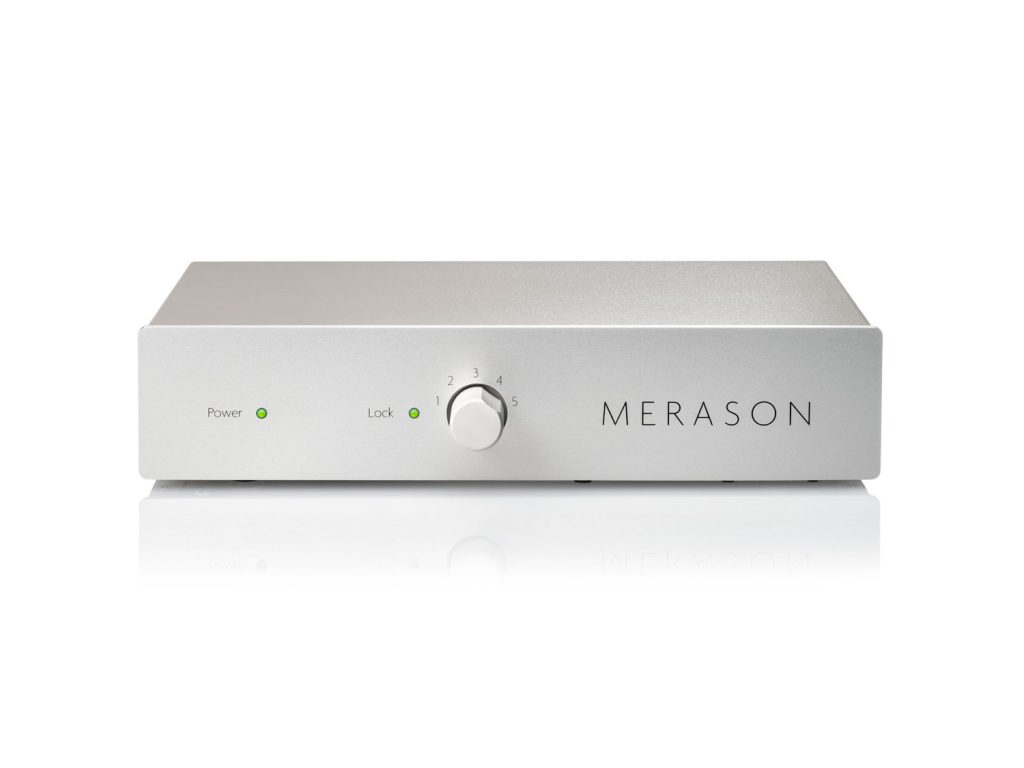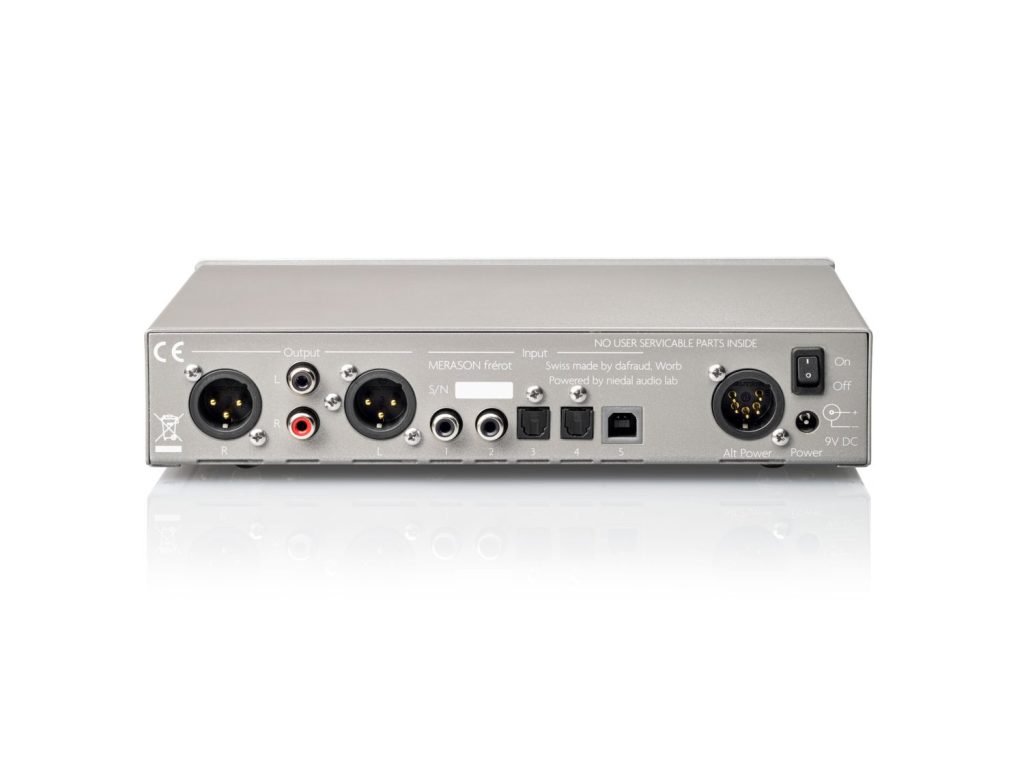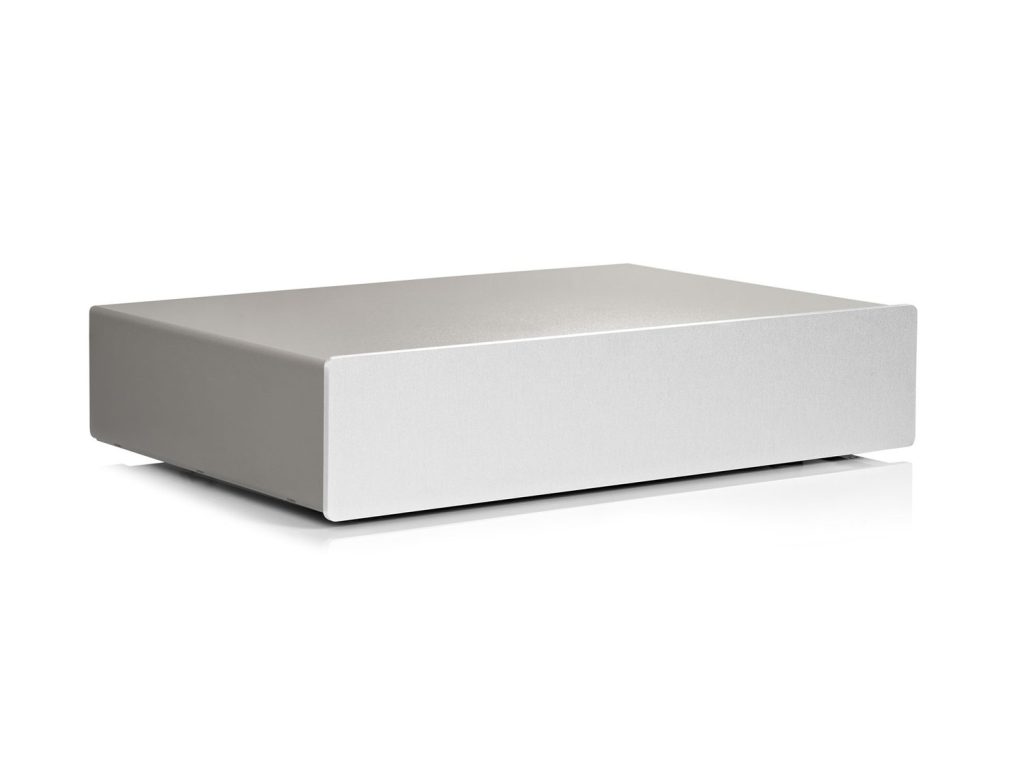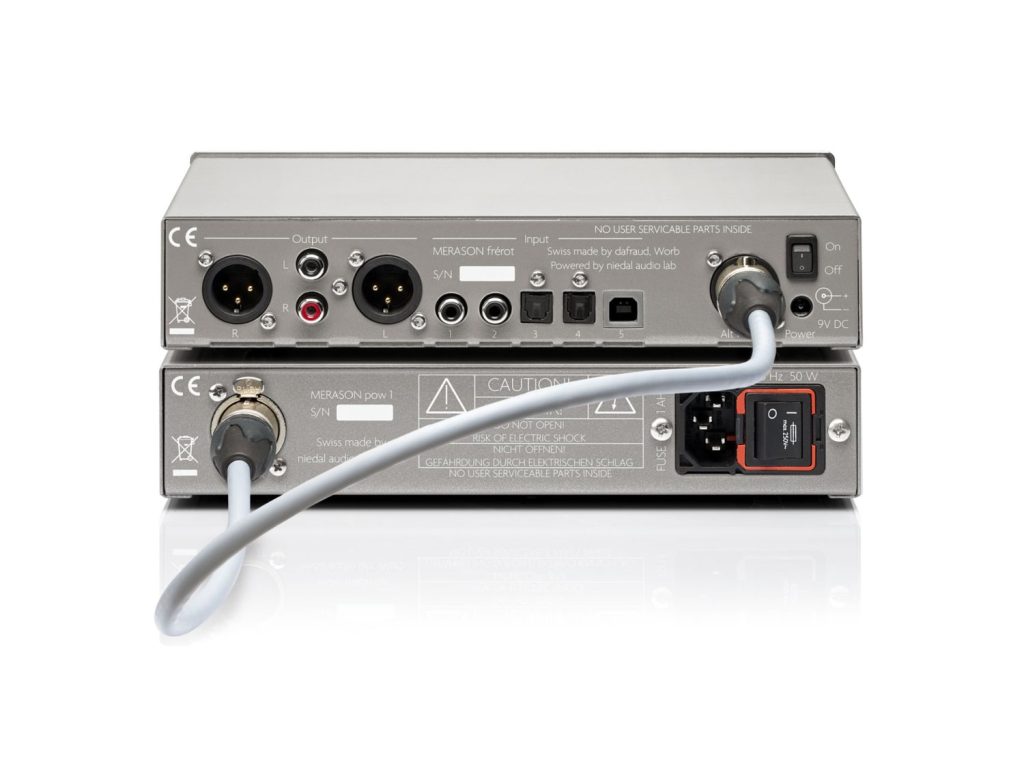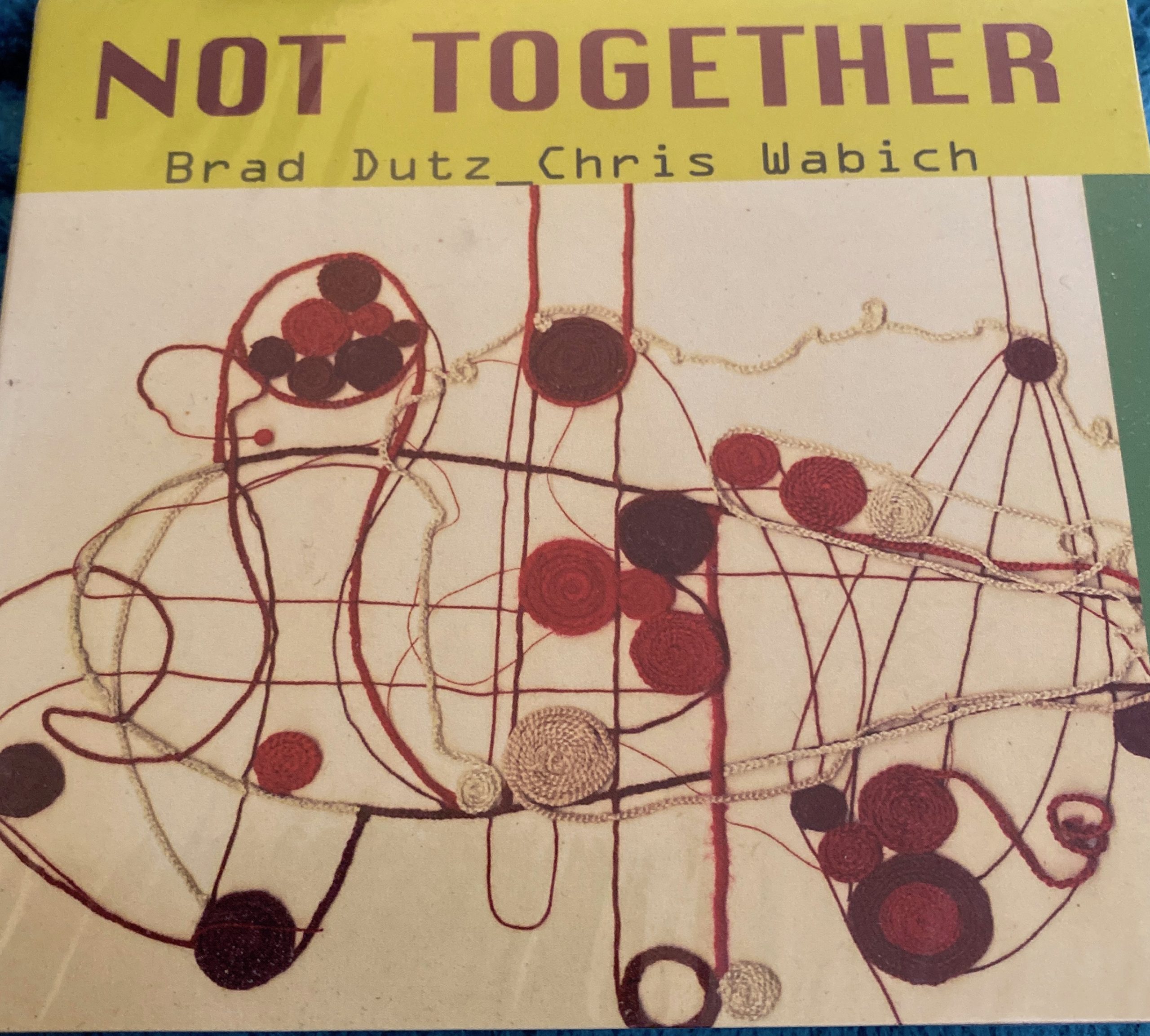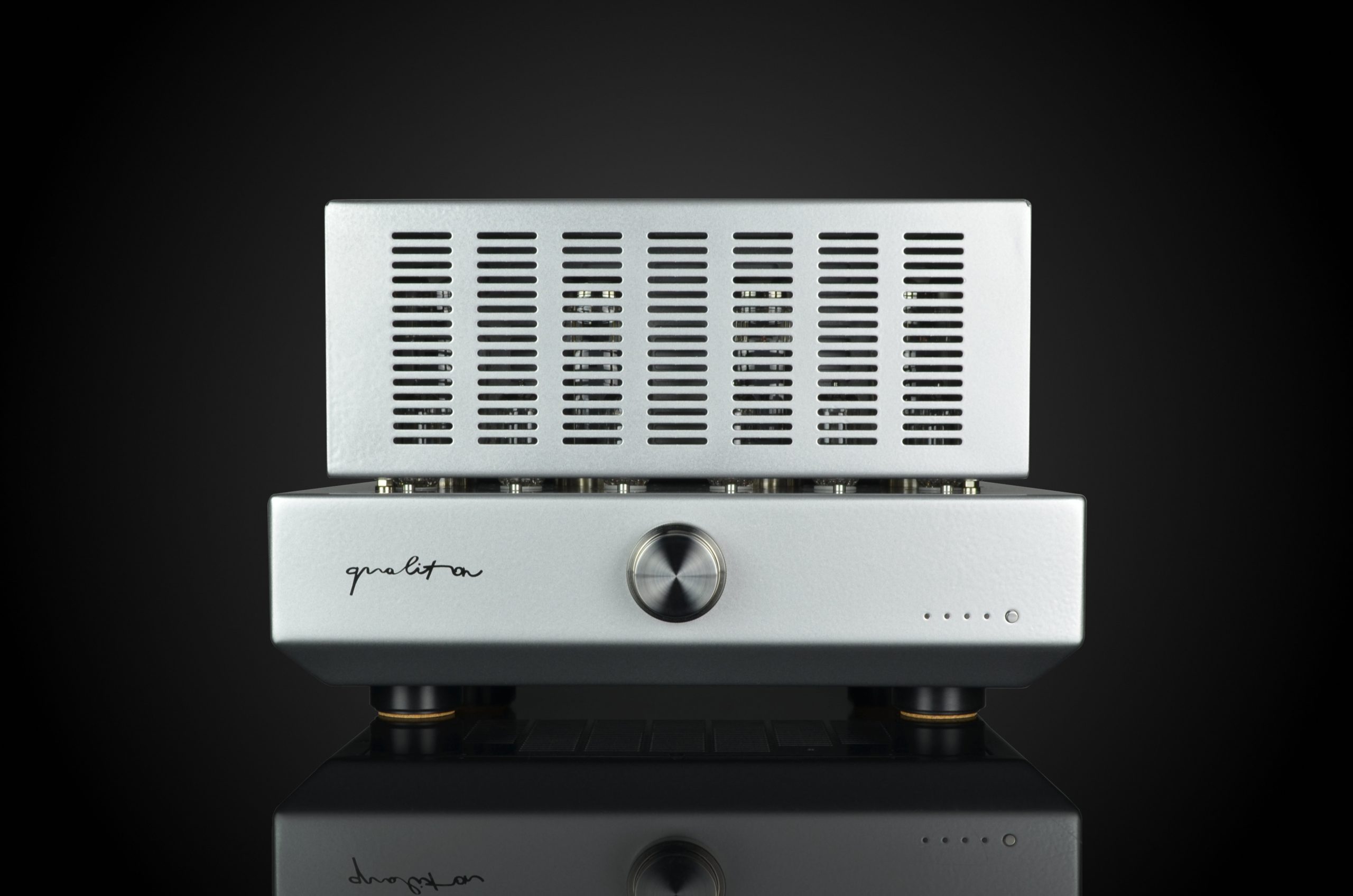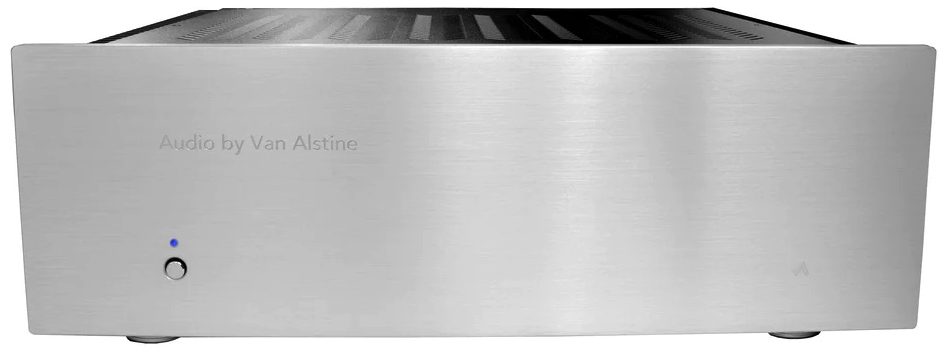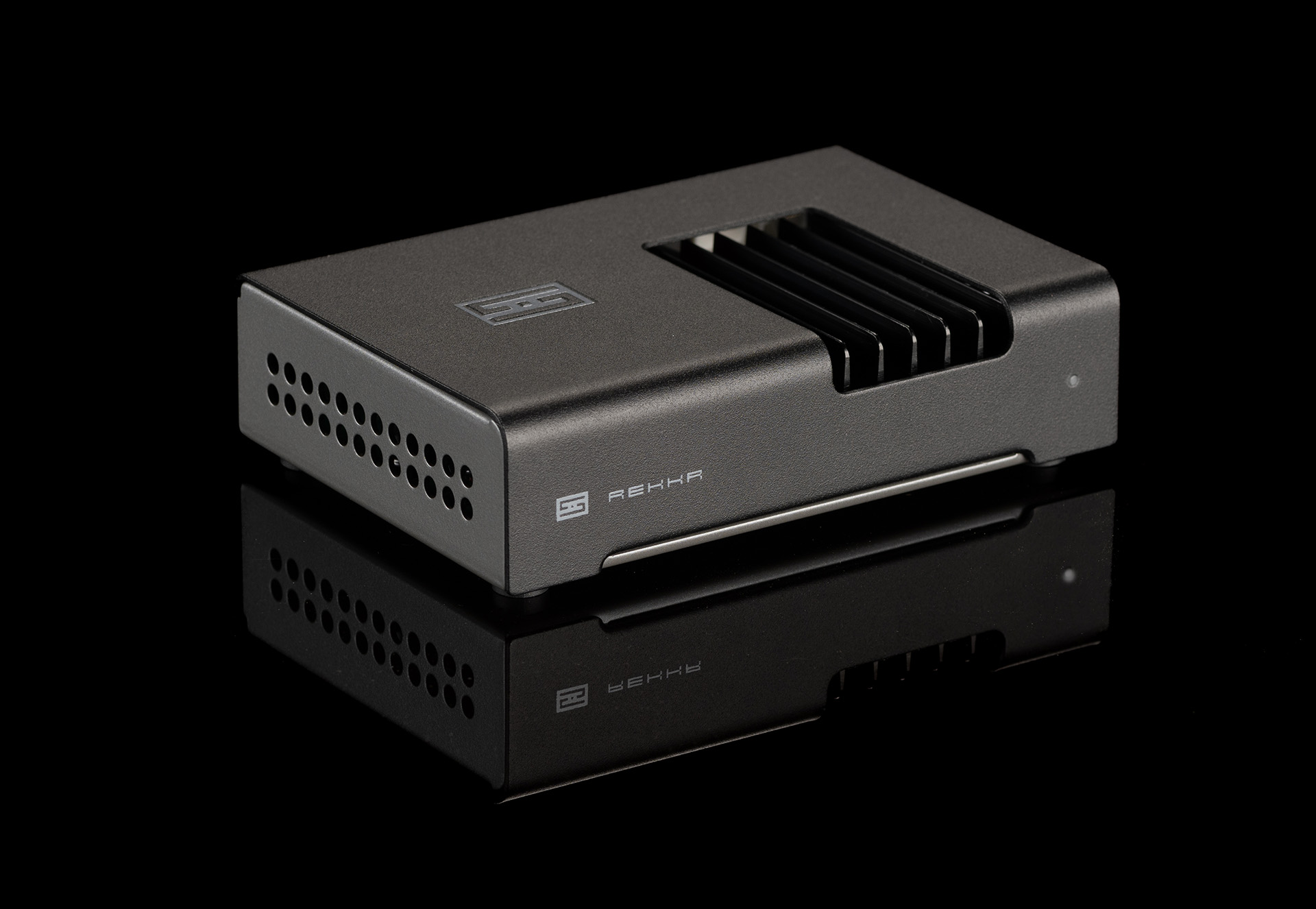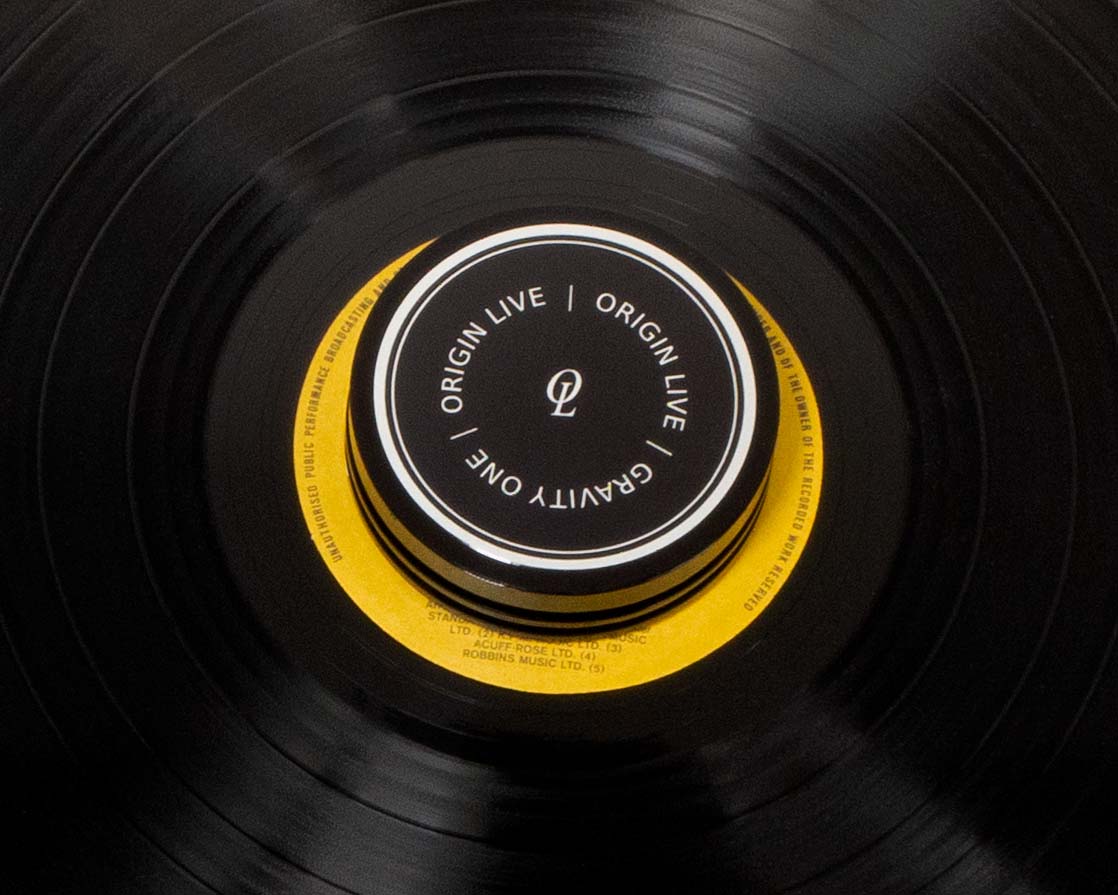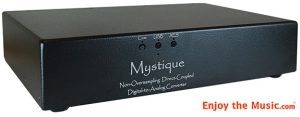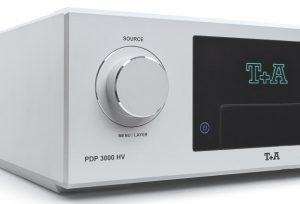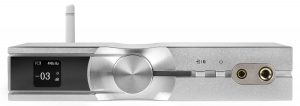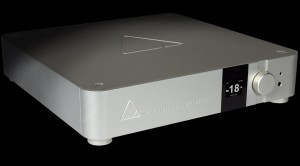Together in Bits and Pieces. First Bit.
The least expensive way to get great sound out of your system is to "cheat." Don't buy new gear, buy really well recorded music. The sound your system exhibited with pedestrian recordings will now sound much better, because the source is literally better. This is no joke. Sure, those better recordings without other upgrades won't show the full extent of that recording, but your system will now sound better, perhaps much better, and it could be said to be "free."
There is a penalty to this trick, however, which is too much for me to pay. I'd be shackled to a few recordings of music I wouldn't pay to listen to live—they're not musically interesting they're just well recorded sound, a kind of parlor trick for myself and others. Many are the audiophiles who've collected music that they play to show off their system to other people or to confirm for themselves that the money spent on their system was worth it. But why anchor yourself and your system to music you wouldn't listen to if you were not obsessing about your system? Insanity, that's why.
Second Bit
You can also spend a ton of money on your system—duh!—and maybe your system will sound better than it did, or maybe it's just different. Sometimes new gear is an across the board improvement. But often when I've obtained "better performance" maybe certain elements are better, but other elements... not so much. The "not so much" becomes apparent over time, long after the lather of new pleasures has disappeared.
A quick way to spend a ton of money is to buy from a European company—they do make great gear—and if you'd like to burn the contents of your wallet really fast, hunt down some gear made in Switzerland. FM Acoustics is a brand that has a reputation for great sound and... is their lowest cost preamplifier the price of a new entry level car? That's too rich for my wallet. I'm picking on the Swiss, because... I'll be writing about my experience with a Swiss DAC here. And, because I have a fair bit of familiarity with the Teutonic (German) sensibility.
Third Bit
Germans and German Swiss have a reputation for being cool and analytical, even amongst themselves, see Sabrina Winter's comments below, note it's her description, not mine, but hee hee hee!* As for a personal example, I offered my mother-in-law in Germany a treat I really liked. When asked how she liked it she said, "I didn't." For me, the American, the offering was an act of love. I hoped she'd like the food, but really, I wanted to be acknowledged for sharing something precious to me. My mother-in-law, who is actually wonderful in that role, was answering the question asked, did you like it? I was annoyed and thwarted but my mostly "Americanized" wife understood the underlying intention. My Schwiegermutter answered the literal question but missed the underlying emotion. Can the Teutonic audio mindset include the literal (analytic?) notes AND the underlying emotion?
Teutonic "sound?"
Is there a Teutonic sound, e.g. Germany and Switzerland that matches my Schwiegermutter and a literal/analytical mindset? I owned the Swiss Ensemble Figura speakers for several years, and spent three months with that company's Dirondo/Dichrono digital combination ($15,000 ca 2003) DAC and transport. Paired with analytical components and a dry recording, the Ensemble equipment tilted toward the lean and analytical—emotion was not as present. That said, one of the most beautiful and emotionally engaging systems I've ever heard—EVER—occurred around 1990 and featured Ensemble's electronics and Primadonna speakers. I have not since heard anything the equal to its rendering of Linda Ronstadt's What's New LP. This, to me, is an element of the Swiss question—is it all between the ears or does it extend to the heart?
Today, I have on hand the Merason frerot, from the German part of Switzerland. The obvious question is does Merason's frerot speak from the head? The heart? Does it speak from both? First, let's look under the hood.
Assembling Bits
The gear on hand here is Merason's "frerot DAC" and "pow1" power supply. frerot is french for "little brother." I divine the lower case spelling used by Merason is to telegraph that this is the entry point before reaching Merason's top line DAC 1: note the matter of fact description and its lack of flourish in the big brother's nomenclature! Merason was founded by Daniel Frauchiger. Frauchiger's impetus to create Merason came from the idea that he could build a better mouse trap using a Chinese DIY DAC he liked by using the design and manufacturing rigor of Switzerland's orientation to excellence to provide something remarkable.
While more products may arrive in the Merason livery, there are, at this point, just the three products I've mentioned. Their DAC 1, ($6000) and the subject of this review, the Merason frerot DAC ($1475) and the pow1 power supply. ($950) Surprisingly, given their low relative prices, they are all made in Switzerland.
Where the DAC 1 features dual Burr Brown PCM 1794A chips in a mono mode, the frerot runs the same single chip in stereo as a way to lower costs. The frerot features five selectable digital inputs, including two S/PDIF, two optical and one USB (Class 2) all accepting up to 24-bit inputs. I'm surprised that the frerot has two Toslink connections rather than two USB or two S/PDIF connections as Toslink is generally not regarded as audiophile quality. Decoding is for both 44.1kHz and 48kHz and their multiples up to 176.4kHz and 192kHz, respectively. Output via the balanced and single outputs max out at 4 volts and 2 volts, RMS for unbalanced (RCA). Signal to noise ratio is reported as greater than 120dB with responses from 20 Hz to 20kHz, =/- 0.2dB. All this in a device weighing just 2.2 lbs.
The front panel is Swiss beauty / simplicity itself. There is a light to the left indicating power is on, a second light indicating the signal has been locked and a rotary knob showing which of the five inputs have been selected. The frerot is tiny, approximately 8.86" x 0.197" x 0.71" (WHD) and weighs a mere 2.2 lbs.
The pow1 is an upgrade to the switch mode power supply (SMPS) that comes as standard with the frerot. The pow1 has an identical physical profile. It is based on a toroidal transformer with three separate power supplies, a symmetrical analog power supply and a power supply for the digital section. The pow1 and frerot are connected by an umbilical cord that is sufficiently long to allow placement as needed, but the cord is short enough to reduce its antenna qualities.
Visual Experience
The workmanship is what I expect of Swiss built gear; very good. The frerot and pow1 are in a typically understated Swiss-style, i.e. well composed and balanced in appearance. The build quality was robust, as expected, and well executed. Despite their small size these are sturdily built and surprisingly heavy, suggesting they will last a long time.
Listening experience
Allow me to gut any story telling suspense and just say that I really liked the sound of the frerot; a lot. This is one of my favorite DACs because it does so much that I like. Live music never sounds threadbare or lean—even if a live venue has a slightly lean or sharp character. Audio gear, however, can sound lean and sharp and even gray. The frerot with its SMPS was not lean, and featured a well mannered tone and timbre.
To appreciate the frerot I had to overcome the sound, and shortcomings, of Schiit's Modi Multibit—($250 when purchased) which I'd grown accustomed to. I know the Modi isn't a proper comparator for the frerot, but my personal life and digital setup has undergone substantial... distractions the past few years. Having a proper comparator was difficult during the pandemic. (This review is a long time in the making) While I will reference the Schiit Modi Multibit, the true reference in this review is the level of performance achieved with my six or seven (?) times more expensive analog setups.
The Modi MB, Schiit's entry level ladder DAC, is sonically rotund and friendly, but short on the contours of musical insight. I've gotten used to digital being my less attractive, though never ugly, music partner. If the frerot is smartly dressed in a pantsuit or an understated skirt and blouse, the Modi MB would be more like an ample figure in a beige sack dress—a less clear profile, if you will. Whatever else the Modi MB was, it was more pleasing though less detailed and precise than the DAC in my Classe Sigma SSP ($5000 when new) preamp processor. Using my profile metaphor, the Classe would be a bit more like a black and white stick figure. Is the Classe terrible? No, it's just less pleasing to me than the Schiit.
Big Picture
As a counterpoint to the Modi's zaftig, fun loving, but ultimately obscuring sound, came the poised and even handed Swiss frerot. The Merason presented itself as more svelte, intelligent, and self-contained, with charms to discover rather than to see all of its appeal in a first glance. Initially, however, it did not occur as particularly "attractive." The Modi's sweetening of recordings was absent and music, for better or worse, was just more clearly rendered. I don't usually listen to audiophile fare and... there's a lot of bland music and performance there. Initially, I found the frerot more like my mother-in-law than my wife, who has happily learned to address the underlying request first.
After randomly ransacking my files for various genres and ages of recordings, the even keeled character of the frerot was hard to determine. To switch metaphors (shame on me) the Modi might be a pleasant comedy—reaching for the pleasant laugh, the Classe might be mainstream news and the frerot?
Property of Pepe and the Bottle Blondes
To test what the frerot was doing I gathered three recordings: 1) "Unnamed" from Late Night Betty by Pepe and the Bottle Blondes; 2) Frank Sinatra's "You Make Me Feel So Young" from Songs for Swinging Lovers; and 3) "Ode d'Espagne for Double Bass" (Dan Styffe, Simex Recordings but on an Ensemble Audio sampler disc). I chose those recordings collectively because they're simple recordings of music rather than simple recordings of... sound, and hoped that would open the door to understanding what it was doing more quickly. "Unnamed" is a female a capella duet with a dash of instrumentation; the second... is Frank in good form and the third is a very well recorded and masterful solo double bass track.
Allow me to reference the late Alan Watts' model of "prickles" and "goo." Prickles are rational, classical, labeling the parts of all of it. Where "goo" is a sort of miasmic or vaporish quality where boundaries between elements are much less defined. The Modi Multibit rendered all three in a "goo" sense. I enjoyed all of the music and... it was a pleasant trip but... not very insightful. My Classe SSP rendered them more in a "prickles" sense. I use prickles to describe music as a collection of notes that may not add up to a "musical story." Reality, as most of us know is a fluid balance of prickles and goo.
Remember this is a comparison
Adjustment was the name of the game for me. There was more precision with the frerot than with the Modi, but it was distinctly different than the black and white Classe. An initial impression was of tone and timbre in a firm (clear) but not tight grip. Instrumental sounds were more immediate and slightly more intense than the more languorous and "beige" (rather than "inky") color of the Modi.
The vocals on "Unnamed" were slightly clearer, and slightly higher pitched, lessening a certain human warmth, but making the a capella duet more nimble and impressive. And, at the risk of a clumsy metaphor, more female. The "lyrics" are an invented, nonsensical language, but through the frerot's clarity the tone and rhythmic qualities of their vocals created a tempo that suggested a story.
Frank Sinatra was rendered more uniquely Frank than at any time with the Modi. His voice and phrasing was rich and real, but a bit less warm. This was much closer to the sound of my analog setup. The arrangement and performance evince a sense of a curated tempo, and that Frank's signature voice is a practiced "relaxed and natural" vocal style. The frerot allowed the quintessential Frank I hear from my much more expensive analog setup to make an appearance. Frank's voice was a bit less deep and resonant, but also, it seemed to me, well distinguished from other male singers.
The Modi's looser and more zaftig plucked bass on "Ode d' Espagne for Double Bass" was replaced with bass that seemed a bit less deep, slightly more highly pitched and faster—overall it was a more interesting recording. It was also less like the "looser" bass I'm accustomed to hearing through 50s stand up bass recordings. I had the sensation that the strings in "Ode d' Espagne" were tightened "just so."
All was well to this point, music was working like a musical equation. Mix the Swiss DAC's presentation of attack, with its way with a well developed sustain followed by an appropriate decay, and voila the elements added up to a story that seemed to be clicking with me. But something got under my skin. Was the frerot's presentation of "Ode d' Espagne" perhaps too tight, maybe truncated or overdamped rendering everything like a marine's boot camp bed—correct but unnaturally tight? As I was wondering if there was much bass below 40Hz—without notice my son pirated my Mac Mini with his rap music, and suddenly volcanic bass erupted from my speakers—a complete disconnect from what had been playing. From a fluid, neat. and tidy presentation of the bass of my music, my son's music was a mix of tight, loose, and wild bass. Good reproduction of a riot is... a bit difficult to picture, but that's what I thought the frerot presented with my son's music—I love the kid but his music... not so much. Clearly it seemed it can play wild, if fed the proper oats.
Returning to goo and prickles, in my system the frerot with its SMPS was slightly turned toward the prickles, but... that's not a definitive take—your source material and system will likely have greater weight than the frerot. I liked it, respected it, and comfortably recommend it at its price. But, being an audiophile is... to be someone immersed in a pursuit, even if it's an insane one. It's probably a chase of "perfection," the definition of which is constructed and reconstructed ongoingly that protracts and thwarts arriving at "the destination." To the sober audiophile—probably an oxymoron—there is no perfection but there can be satisfaction with the prize found/captured.
As I grew more comfortable with this newer, more precise rendering I wanted to see what the external power supply would offer. Many years ago an industry friend remarked, rightly or wrongly, that the power supply of a component is foundational to its performance. While not inexpensive, the $1475 frerot is within reach of many audiophiles, but adding $950 might change the calculus. The increase in performance has to warrant the expenditure. Given it's "only" a power supply, and based on my limited experience... that seemed unlikely to me.
POW!
The pow1 connects to the frerot through an umbilical cord. Flip the power switch on the back of the frerot and the SMPS is disengaged and the pow1 is powering things.
Is the pow1 a useful addition? Pow! is right. Tone and timbre didn't "fundamentally" change, but the tonal intensity (richness) flowered. Flowered as in individual timbres were inky rich—colors were... more colorful and evident, increasing my experience of instruments that existed in a reality beyond a recording of a sound. I did not and do not hear the pow1-less frerot as grayish, but with the pow1, the frerot simply presented more sonic color, it was rich and inky like live music rather than like a recording.
"Unnamed" with the pow1 in place now became more intense, more real, and the intake of breaths became part of an exciting adventure through nonsense lyrics. Words with no meaning seemed more precious, revealing breathing rather than accentuating it, as a key component of emotion in music. How often do we unconsciously include breathing as a piece of the realism of an experience? It seems what unveils the falsity of a computer generated voice is the absence of breathing pauses. On this spare recording, without distracting, the intensity of the breathing as a part of the vocalizing was part of the pleasure of the frerot.
"You Make Me Feel Young Again" was fuller, richer, and warmer. Surprisingly, the sound to me was less spatially differentiated from attack to sustained tones. This, it appears, had more to do with my digital sample. Hmm.
Surprisingly, the double bass of "Ode d'Espagne" seemed to pick up some deeper bass undertones the SMPS obscured perhaps because those undertones occur at a lower amplitude? This time the double bass seemed to have more in common with the less tautly strung double basses of jazz trios; yet still seeming to be strung "just so."
Overall the pow1 stayed the same, but like a final draft versus a rough draft: more things were in place, timing, tone, and timbre were better defined and more easily accessed, really well presented.
I respect people who listen for "you are there" or "they are here" in recordings. However, I cringe hearing that sort of recording that features a superb recording of a bored female singer fronting a three piece band that might be asleep. I got into audio to make music I've liked sound good, however well recorded.
The Kronos Quartet recorded with a continental Indian singer Asha Bhosle on You've Stolen My Heart - Songs From R.D. Burman's Bollywood "Piya Tu Ab To Aaja (Lover, Come to Me Now)." An audiophile friend hates her singing and the strings because... it's a bad recording. Her voice and the strings are shrill, no argument from me. I still enjoy the music and easily listen past a poor recording much as I do at a venue with poor sound. Yes, the recordings problems were telegraphed by the frerot, but the message and pleasure of the music shone through.
John Prine's Tree of Forgiveness has a wide range of recording qualities from awful to quite excellent. I loved this recording through the frerot. Tracks like "I've Met My Love Today," "No Ordinary Blue" as well as "God Only Knows" were stark evidence that a CD is a collection of different recording sessions, locations and successes and misses.
I pulled up Victoria de los Angeles singing Heitor Villa Lobos' Aria from his Bachiana Brasilieras. Nearly every time I listen to it, the song is over before I notice it. The recording quality becomes... irrelevant to my enjoyment. The kinder Modi allows me to enjoy it, the Classe, no thanks! Why, you may ask, would I revel in enjoying poorly recorded music? Music is a transportation device, entertaining as a diversion should be. The frerot's performance did not exacerbate the recordings problems and did not further bleach the richness on the recording.
I asked my wife to drop her unending "type A" tasks and give a listen. Usually, she'll listen dutifully and then run back to whatever checklist is trying to free itself of the force of her will—I cued up something, I don't remember now, and left to pick up dinner. Returning a half hour later she was still in the seat working her way through my Audirvana library exclaiming "this is really good." Usually she humors me when I ask her opinion, but this time she stayed seated and engaged. God knows what else—the Hadron Collider?—would keep her seated. Yes, she loved it. My system, in my estimation, is pretty good and yet she rarely praises it. My LPs often get praise, but digital? No.
My German-born wife has a mix of the emotionally available and hyper rational. But, when it comes to "art" she's decidedly more engaged by the emotional aspects of music than the technical (analytical). Her preference and my experience of the frerot and pow1 slightly tilted toward the emotional. Neither her praise nor my pleasure were because of the reproduction of bass or detail or imaging (I apologize but I still don't weight imaging or soundstaging as important) or any of the elements that would fall into the prickly characterization. The frerot's mix in my system was of more goo emotional than analytic prickles. This is how I've experienced live music throughout my life. If you want with the frerot you can track an instrument or the phrasing of a piece if you want, but what enters the door is an emotional experience of beauty. If I did not already have about 1200 LPs , some of which I've been toting around with me for 40 years, I don't think I'd get into analog. The frerot/pow1 makes sticking with digital a comfortable choice to me. Yeah, I love my analog setup, but I love the convenience and the quality of sound of the two Swiss pieces in my system.
So, it's perfect, right? No.
Criticisms? On a technical side, why two Toslink connections? To fit more av sources? Fifteen hundred dollars for an AV system? Hmm, I think another USB input would be more useful. The choice of sources is, however, a suggestion that Merason sees the frerot as part of a mixed two channel and AV system. Another petty complaint is I'd prefer fewer boxes on my rack for space and aesthetic reasons. Although there was no evidence of RFI leaking through the umbilical cord, I prefer to have fewer cords near one another.
My last criticism will likely be interpreted as more negative than I intend. I imagine, in a perfect world, that with dual mono DACs (think Merason's DAC1) I think dynamic shading would be better. Maybe, maybe, the pow1 provided the lift that let the frerot rise to a superlative performer. The pow1 is, in my system, a very valuable step up from the frerot and its stock SMPS. Your system, I think, would also have to be of a level to appreciate such distinctions.
To contextualize my distinction, imagine you're listening to a world class singer. You might think, hmm, she sounded better on another occasion. "Better" doesn't necessitate either performance is less than excellent, one is simply superior. If you listen to an amateur sing that same song you think "that's pretty good" they got through the whole song without making you flinch! "Pretty good" is a world apart from "could have been better." Dynamics, an almost "inky" tone and timbre are my sonic trinity - you may not care about those but they are my sine qua non. The frerot/pow1 sail through tone and timbre excellently and do dynamics well. This is a product that fits my wheelhouse.
Conclusion
The frerot tells a very musical story, but is not falsely nice telling fairy tales about your music. If you want the beauty and emotion of your music, the frerot alone or the frerot/pow1 could end your pursuit. At the end of her listening session my wife asked me expectantly, are you buying it? I could and not look back. I seem to have trouble making decisions right now because of so much personal... "change." So I've placed a marker with the frerot / pow1. The frerot / pow1 are on a short list I'm constructing. It's well priced, performs really well, is built to last and... it took me on a trip. I think many would love the view and sound of the frerot. Very highly recommended.
Merason frerot / pow1
Retail: frerot $1475; pow1 $950
Merason
All images are the property of Merason
* a certain "Sabina Winter" from the German speaking part of Switzerland says of her country's three primary languages (German, French and Italian):
"We, the Swiss Germans, are convinced that we are the only ones keeping this country going.
"Without us, the Swiss French would be drinking wine and singing melancholy songs all day. Nothing would ever get done. We call ourselves "Bünzli"*** (the type of person who fully conforms to rules and ensures that everyone else does the same—that's TOTALLY my wife), basically saying we have a massive stick up our butts, and the general attitude of Winnie the Pooh's Rabbit character. We are, I assume, a pain in the arse to the Swiss French.
Now, we don't much talk about the Swiss Italians, as they are a lost cause. We've given up on that bit (of Switzerland) and treat it like it already belongs to Italy. At most, we go there on vacation." Sabrina Winter, on www.quora.com.




